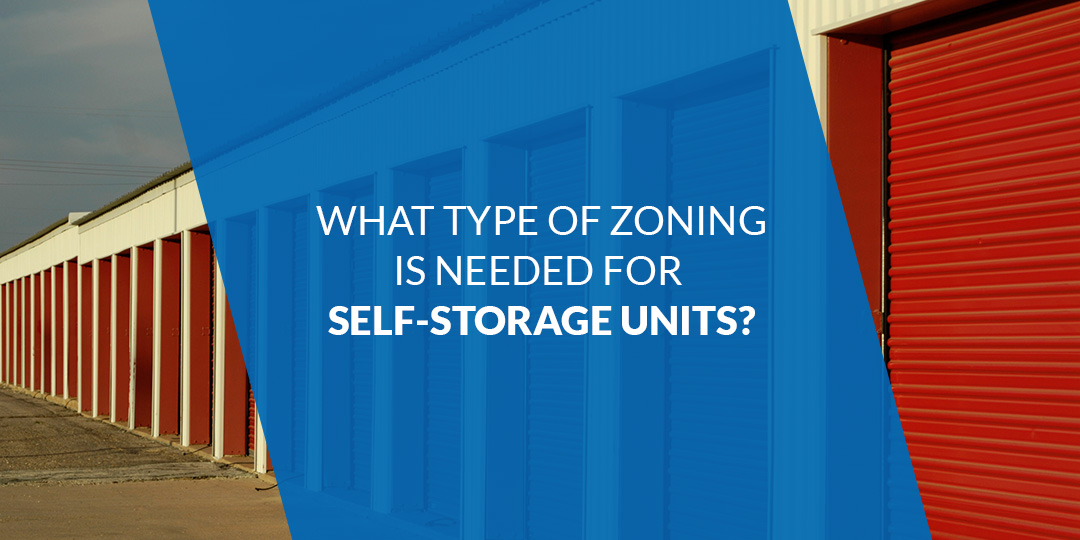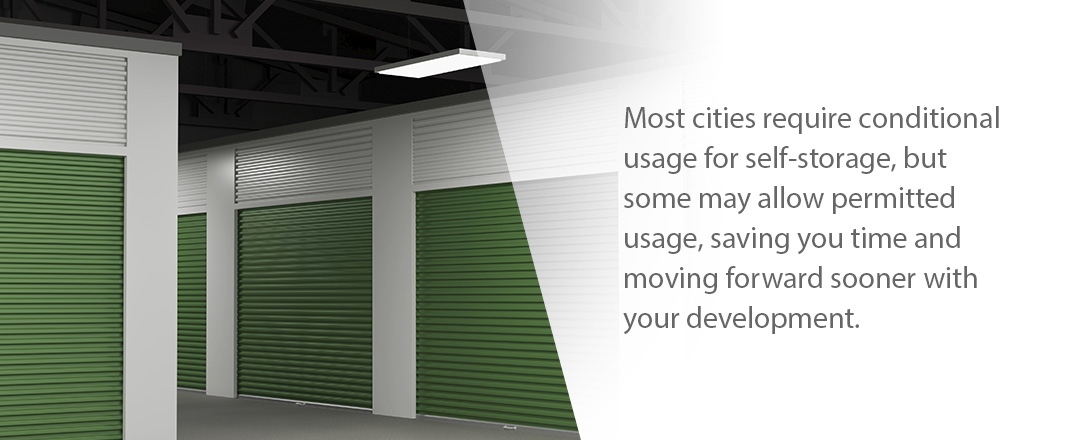What Type of Zoning Is Needed for Self-Storage Units?

Zoning laws are essential for self-storage units, as they regulate what the land is being used for. These laws are defined by government bodies and establish how the land can or can’t be used in a given area, setting rules for development.
These laws split the land into different categories, including residential, commercial, agricultural, industrial and recreational. Self-storage properties don’t necessarily fit into any of these categories. Before self-storage became so popular, these developments typically only existed in industrial zones. Now that more people desire self-storage properties in a convenient location, the zoning process for self-storage units has changed.
The Process of Getting Your Property Zoned for Self-Storage and Zoning Changes
Understanding what zoning is required for self-storage units can help you achieve your goals and start your business as soon as possible.
The first step of the process is finding land or a vacant building in a desirable area, such as one with a solid consumer base, access to utilities and easy visibility from the road. If the land isn’t currently permitted for self-storage development, the developer will need to request a rezoning of the area to meet your desired use.
Here are the steps you can expect to follow during the process:
- Contact your municipality: To rezone your property to develop self-storage, you’ll need to reach out to your municipality. You’ll be able to schedule your first meeting and collect the appropriate documentation. You may need to fill out an application to begin the process.
- First meeting: Once you’ve contacted your municipality and set things in motion, you’ll have your first meeting with planning staff. The first meeting will help you understand the local zoning process, rules and potential challenges you may face. You’ll be able to determine what can work during the site plan.
- Professional planning: Once the initial meeting is complete, you should start working with professionals on your property development plan to prepare for the formal hearing. The team members should have some experience with self-storage and can include a land planner, an architect, a civil engineer and an attorney.
- Neighborhood meeting: The neighborhood meeting will help you hear concerns from residents and other businesses in the area, serving as a rehearsal before the formal hearing. Some issues you might hear about include concerns about property value, traffic and crime. You can help put these concerns to rest by providing them with accurate information about how your business serves the community.
- Formal hearing: The final step of the process is the formal hearing, where you can present your case. You should have a detailed development plan and be ready to answer any questions, such as those about traffic or hours of operation. Ensure you’ve dedicated enough time and effort to create a strong case and address all concerns professionally. If you’re properly prepared and professional, you’ll increase your chances of obtaining zoning approval.
What Is Conditional Usage?
Many cities designate self-storage under the conditional usage category. Conditional usage means the government or municipality can interfere with the development project to mitigate the impact. Conditional use usually requires completing an application, creating design drawings and planning for the governing agency.
The process of conditional usage can be tedious and time-consuming. You’ll likely need to meet with residents and local businesses before your formal hearing to learn about their concerns, allowing you to address each one to give them peace of mind. Ensuring you’re prepared before your formal hearing can help you obtain approval for your self-storage development.

What Is Permitted Usage?
Permitted usage is far more straightforward than conditional usage. Permitted usage means you can use the land by right. You won’t have to go through a lengthy process, such as public hearings and applications. Instead, your proposed project can move straight to the building permit stage without the need for public input.
All you need to do is ensure you meet all the requirements, so you don’t experience any setbacks, such as landscape requirements. Politics won’t be a factor in the process, meaning all that matters is following development standards.
Most cities require conditional usage for self-storage, but some may allow permitted usage, saving you time and moving forward sooner with your development.
Learn More About Self Storage Zoning
What Is the Design Review?
The design review is a more straightforward process than the others since land use is already determined. The local jurisdiction will look at the design of your self-storage plans and assess their quality. Design review often occurs in a permitted use location where the local jurisdiction wants a say in the design of the self-storage facility.
The local jurisdiction will look at how architecturally compatible the proposed facility is with surrounding businesses and properties. They’ll also look at your proposed project’s design, landscaping and colors. They’ll determine if you need to make changes to your design plan before approving the project.
How to Get Your Self-Storage Facility Approved
Politics often come into play when self-storage investors are looking to get their facilities approved, especially with conditional usage areas. You’ll need to get the approval of the government or municipality, which often involves appealing to the residents and businesses in the area.
A few things you can do to get your project approved include:
- Resident and business outreach: The locals may be concerned about how a self-storage property might affect the area. Some could be concerned about increased traffic, crime or property value. Prepare yourself to address these concerns with the facts — you’ll need to conduct plenty of research before and after purchasing your property. Setting community members’ minds at ease can go a long way in getting your self-storage facility approved.
- Building a quality team: If you don’t have experience with the politics involved with zoning, you’ll want to work with an experienced team to guide you through the process. A quality team might include zoning attorneys, architects, civil engineers and landscape designers. These individuals can help you work through the entire process, starting with your application and ending with your approval.
- Stay persistent: Even if you aren’t approved the first time, you can continue working with your team and the local government to make improvements and get your self-storage facility approved. You can continue working on your design, communicating with residents and creating a plan that suits everyone involved.
Trust Investment Real Estate, LLC as Your Self-Storage Investment Brokers
Investment Real Estate, LLC is a top real estate broker providing services for self-storage properties across the Northeast and mid-Atlantic.
You can view our current listings and request property information — we’ll deliver all the information you need, such as financial statements, to help determine if you’re interested in moving forward with the property. If you decide you want the property, we can help you finalize things as quickly as possible.
We can also help you sell your property. We’ll give you a free property valuation and list the property for you, helping you find a buyer. Once someone expresses interest in your property, we can help you close the deal.
Learn more about our sales process or contact us today to get in touch with your professional team of self-storage investment brokers.


